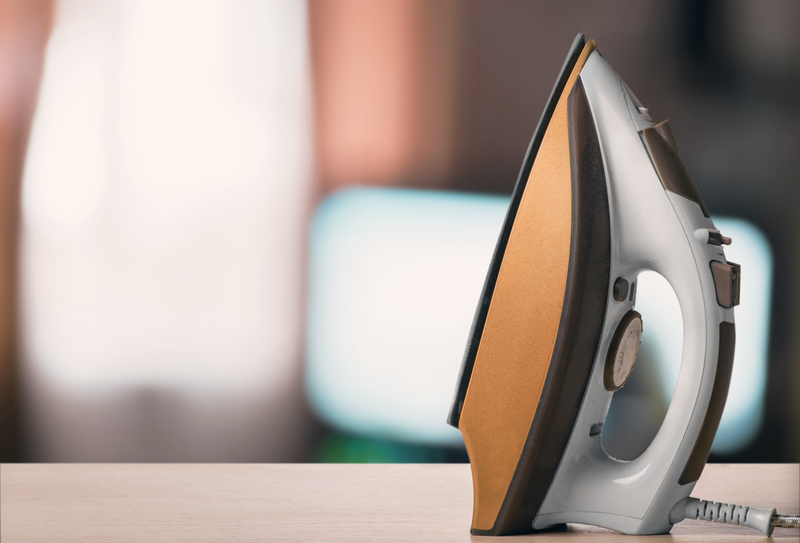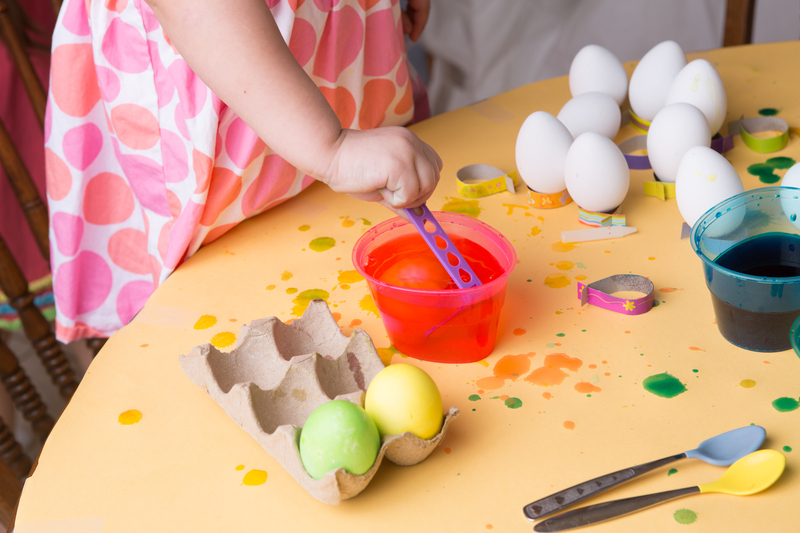Master the Art of Grease Removal: Enamel Oven Tray Methods
Posted on 24/09/2025
Master the Art of Grease Removal: Enamel Oven Tray Methods
Imagine opening your oven and being greeted with a sparkling clean enamel tray. The daunting task of removing stubborn, baked-on grease can feel overwhelming. However, with the right techniques and supplies, it's not only possible--it's easy! In this comprehensive guide, master the art of grease removal from enamel oven trays and discover effective, simple-to-follow solutions, ensuring your kitchen remains hygienic and your cookware stays in top shape.

Why Does Grease Build Up on Enamel Oven Trays?
Enamel oven trays are durable and attractive, but their smooth surfaces are prone to accumulating stubborn grease and burnt-on residues over time. Regular use of ovens for roasting, baking, and grilling creates splatters and spills that, when left uncleared, transform into baked-on grime that clings to enamel finishes. Understanding why and how this happens can help in devising strategic cleaning solutions.
- High temperatures: Cause fats and oils to carbonize and harden.
- Food residue: Sugars and proteins form resilient deposits when exposed to heat.
- Irregular cleaning: Delays allow grease to embed, making removal much harder.
Benefits of Keeping Enamel Oven Trays Clean
- Improves kitchen hygiene: Grease encourages bacteria and unpleasant odors.
- Extends tray lifespan: Prevents enamel corrosion and chipping.
- Enhances meal flavors: Old residues can burn and taint new dishes.
- Prevents smoke: Clean trays reduce smoking during heating.
What Makes Enamel Oven Trays Special?
Enamel oven trays are made of metal, usually steel or cast iron, coated with a layer of glass-like enamel. This construction offers superior heat resistance and a non-stick surface that--when cared for--makes cleaning significantly easier than with other materials.
- Non-reactive: Safe for acidic foods and won't impart flavors.
- Hard-wearing: Resistant to scratches, though abrasive pads should still be avoided.
- Attractive: Comes in sleek, glossy finishes suitable for all kitchen styles.
However, improper cleaning methods can degrade the enamel coating, so it's vital to choose approaches tailored for this material.
Step-by-Step Guide: How to Remove Grease from Enamel Oven Trays
Ready to erase stubborn grease and restore your oven trays to their original shine? Follow this comprehensive, step-by-step guide encompassing everything from simple home remedies to specialized products.
Preparation: Gather Your Cleaning Supplies
- Hot water
- Baking soda
- White vinegar
- Lemon juice (optional but effective)
- Soft sponges or microfiber cloths
- Dishwashing liquid (degreasing type)
- Plastic or wooden scraper (never metal, to avoid scratching)
- Commercial oven or grill cleaner for heavy-duty jobs (ensure it's enamel-safe)
- Protective gloves
Method 1: The Classic Soak and Scrub
Perfect for everyday maintenance and mild grease buildup.
- Let the tray cool: Avoid handling hot enamel to prevent burns or cracks from thermal shock.
- Fill your sink or tub: Use hot water--a drop of degreasing dishwashing liquid works wonders.
- Submerge and soak: Leave your enamel oven tray to soak for at least 30 minutes. This softens the grease, making it easier to remove.
- Gently scrub: Use a non-abrasive sponge or cloth. Wipe away loosened grease and residue.
- Rinse thoroughly: Ensure all soap is gone to avoid future sticky buildup.
- Dry with a soft towel: Prevent water spots, which can dull the surface.
Tip: For persistent patches, apply a little extra baking soda before scrubbing.
Method 2: Baking Soda and Vinegar Paste
This chemical reaction works wonders for medium-duty grease stains.
- Make a paste: Mix 3 parts baking soda to 1 part water.
- Spread on the tray: Focus on greasy or burnt areas.
- Spray with vinegar: Let it fizz for 5-10 minutes--this breaks down stubborn deposits.
- Scrub gently: Use a soft sponge or microfiber cloth.
- Rinse and repeat: For tough spots, repeat the paste and scrub step.
- Final wash: Plain hot soapy water ensures all residues are gone.
Method 3: Lemons for Natural Grease Fighting
Lemon isn't just for flavor--it's a natural degreaser and deodorizer.
- Halve a lemon: Rub directly onto stubborn grease patches.
- Leave juice to sit: 15 minutes allows the citric acid to break down fats.
- Sprinkle with baking soda: A gentle abrasive action helps lift the grime.
- Scrub and rinse: Use a soft sponge, then rinse well for a zesty-fresh tray.
Method 4: Commercial Grease Removal Products
For extreme build-up or when homemade solutions aren't sufficient.
- Choose an enamel-safe oven cleaner: Always check the label for compatibility and follow safety instructions.
- Ventilate: Open windows or run fans to reduce chemical exposure.
- Apply cleaner: Spread an even layer, focusing on greasy patches.
- Wait as directed: Most products require 10-30 minutes of dwell time.
- Scrape gently: Use a plastic scraper for stubborn areas.
- Wash off thoroughly: Hot soapy water ensures no cleaner residue remains.
- Rinse and dry: Complete the process as with other methods.
Note: *Never use abrasive pads, steel wool, or metal tools on enamel surfaces as these can scratch and ruin the finish.*
Pro Tips for Keeping Enamel Oven Trays Grease-Free
- Clean after each use: While the tray is still warm (but not hot), wipe away minor splatters before they harden.
- Use non-stick liners: Silicone or parchment paper liners catch drips and can be discarded or washed easily.
- Address spills promptly: Immediate removal is always easier than tackling hardened grease.
- Avoid harsh chemicals: Prolonged use can etch enamel and shorten your tray's life.
- Inspect regularly: Small chips or cracks can trap grease--replace trays as needed to maintain hygiene.
Common Grease Removal Mistakes to Avoid
- Scraping with metal utensils: Can cause permanent enamel damage.
- Ignoring care instructions: Each tray or oven may have specific cleaning recommendations.
- Over-soaking: While soaking is good, hours-long soaks can weaken enamel bonds--always limit to recommended times.
- Stacking wet trays: Always dry thoroughly to prevent water spots and rust around edges.
FAQs: Mastering Grease Removal for Your Enamel Oven Trays
1. Can I use bleach or ammonia on enamel trays?
No. Bleach and ammonia are harsh chemicals that can dull or discolor enamel. Always opt for gentle, enamel-safe cleaners.
2. Is it safe to put enamel oven trays in the dishwasher?
Check the manufacturer's instructions. Some trays are dishwasher-safe, but repeated machine washing may dull the shine or fade colored enamels.
3. What should I do if my enamel tray has a stubborn burnt spot?
Try the baking soda and vinegar paste method, allowing it to sit for longer. For deep stains, use a plastic scraper with care.
4. Can I prevent grease build-up in the first place?
Yes! Line trays, clean promptly after use, and use moderate oven temperatures when possible.
5. My tray's enamel is chipped. Can I still use it?
If only minor chipping has occurred, you can still use the tray, but avoid covering chipped areas with food. Deep chips can trap bacteria or lead to further damage--consider a replacement in such cases.

Eco-Friendly Alternatives for Grease Removal
Concerned about using strong chemicals? If you prefer environmentally responsible grease removal methods, these are your best choices:
- Baking soda and lemon as described earlier naturally deodorize and cut through oil without harming the environment.
- Vinegar soaks with hot water break down light grease and are fully biodegradable.
- Plant-based dish soaps often contain powerful degreasers without the toxins present in synthetic detergents.
Tip: Always dispose of properly--do not pour bags of greasy water down the drain as fats can solidify and clog pipes.
Summary: Become a Grease Removal Pro
Mastering the art of grease removal for enamel oven trays is easier than many think. The secret lies in prompt action, using the right tools and substances, and avoiding harsh abrasives. By incorporating these straightforward grease removal techniques for enamel oven trays into your cleaning routine, your trays can shine for years, meals taste fresher, and your kitchen remain a beacon of cleanliness.
- Soak, scrub, and rinse after each use.
- Use natural solutions for regular maintenance.
- Turn to commercial products sparingly and safely.
- Protect, inspect, and replace trays as needed.
Ready to tackle kitchen grime like a pro? With these enamel tray degreasing tips and regular care, even the toughest grease doesn't stand a chance. Make your oven trays sparkle and enjoy a healthier, more appealing kitchen today!




